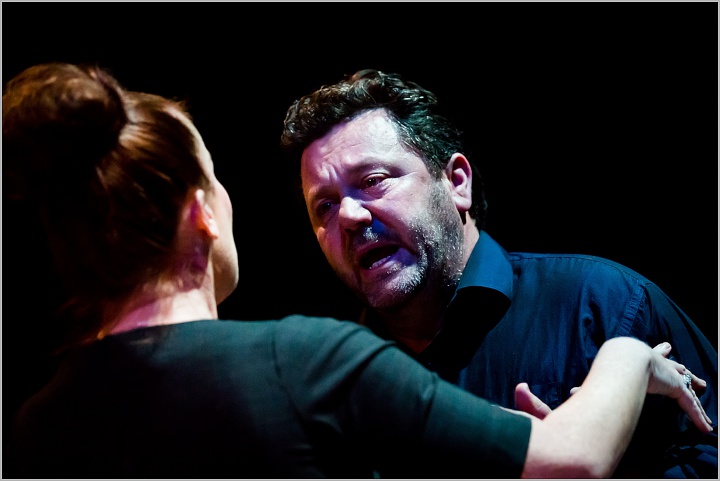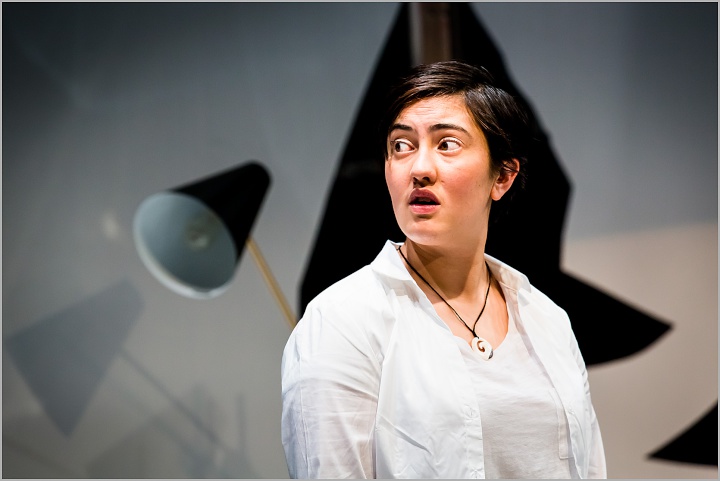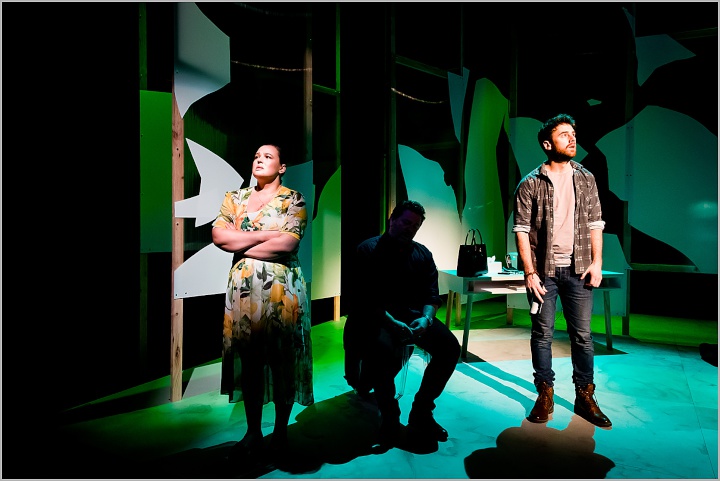Anahera review: Social criticism, through the family frame
Anahera review: Social criticism, through the family frame

On stage, three characters start the play : Peter and Liz, whose son Harry has disappeared, and Anahera, the social worker who is here to help them get over the situation. This tragic event, which seems to be central to the play, is actually a pretext for its writer Emma Kinane to deal with a lot of complex social issues. Katie Wolfe, the director, manages to give life to these complex and contemporary stakes, while keeping a certain distance.
To do so, the frame chosen is particular and surprising. Anahera is set ten years in the past and ten years in the future. As the scenes in the future run in reverse chronological order, the two different realities of the same family confront each other, until they meet. This is accentuated by the lighting designed by Lisa Maule and the sound designed by Andrew McMillan and Katie Wolfe, which enable the spectator to understand when the events are in the past or in the future.
For the five actors, including the two children, this play is a real challenge. It goes from a kind of detective story – where Anahera is searching for why the child has run away – to a psychological play, where facial expression and voice are more important than gestures.

Neenah Dekkers-Reihana brightly interprets the eponymous character by expressing all of Anahera’s feelings merely with her features, and with her eyes. During most of the play, she stands facing the audience, reacting to the events, in the same timeframe as the spectator. This character is symbolically expressive in different ways : Anahera represents social workers in New Zealand, and the complexity of a quite misunderstood job. She allegiance to her iwi leads to a confrontation between two perceptions of the world, living side by side. Finally she embodies the role of an angel, which is the translation of her name. She comes to protect the family, she does not only want to have a rational analysis of the runaway, but she looks for signs. The spectator quickly understands that her presence is the real trigger point of the resultant changes.
Peter’s character, the father, builds over the course of the play, thanks to feelings which are revealed step by step. Neil Rea succeeds in entering the skin of a devastated father and husband, to a degree hardly conceivable for someone who has never had to deal with such a tragic drama. Opposite him, a cold, proud, and confident Liz, his wife, progressively collapses. Jacqueline Nairn perfectly plays the part without judging her character’s acts but by nuancing Liz’s reactions. The two parents are the example of an average Kiwi family, as Mark McEntyre set design reveals, which enable the play to convey a silent commentary on an individual society where people think about themselves and their job before their family.

The spectator can understand only step by step the psychological pain in which the two children have grown up. Anahera discovers why Harry, interpreted by Simon Leary, has decided to run away. Another issue involves his sister Imogen, played by Susie Berry, who suffers from being non- assertive and obedient compared to her rebellious brother. The dysfunction of the family is all the more apparent to the audience when they can see an example of the love between the children. The two actors entirely succeed in making their characters evolve in parallel with the temporal change.
If writing Anahera took a long time to Emma Kinane, the result has benefited from this- because the play succeeds in taking a distance from society itself, to better understand its issues.
Anahera plays at Wellington’s Circa Theatre until 7 October.


 Te Whatu Ora Health NZ: Health Warning – Unsafe Recreational Water Quality At Roto Kohatu Reserve At Lake Rua
Te Whatu Ora Health NZ: Health Warning – Unsafe Recreational Water Quality At Roto Kohatu Reserve At Lake Rua Shearing Sports NZ: Shearing Them Around - 11 Shearing Records In 2024
Shearing Sports NZ: Shearing Them Around - 11 Shearing Records In 2024 The New Zealand Retro: Special End Of Year Retro Chart Show On Independent Radio Stations
The New Zealand Retro: Special End Of Year Retro Chart Show On Independent Radio Stations ASB Polyfest: Polyfest’s 50th Celebrations On Track Despite Funding Cuts
ASB Polyfest: Polyfest’s 50th Celebrations On Track Despite Funding Cuts Air New Zealand: Raw Thrills - Air New Zealand's Most Popular Inflight Entertainment Revealed
Air New Zealand: Raw Thrills - Air New Zealand's Most Popular Inflight Entertainment Revealed Hustle Management: Celebrating 50 Years Of Music, Now And Then, With Mark Williams
Hustle Management: Celebrating 50 Years Of Music, Now And Then, With Mark Williams